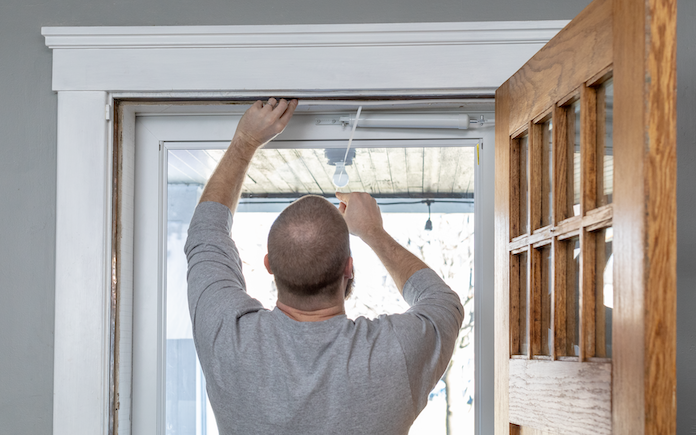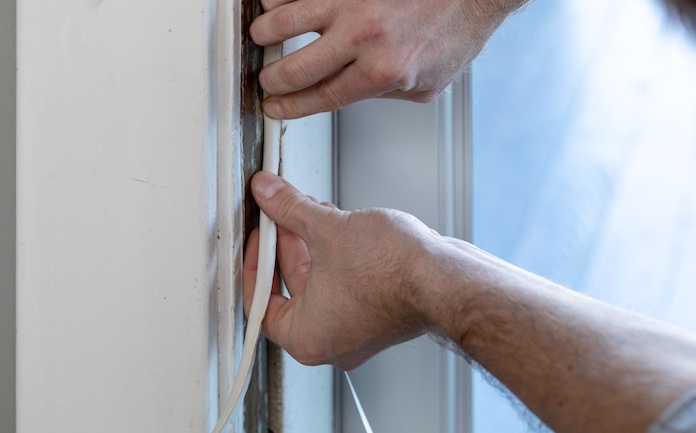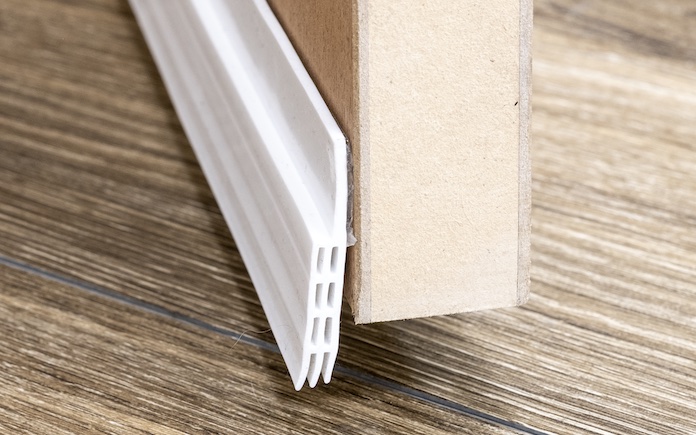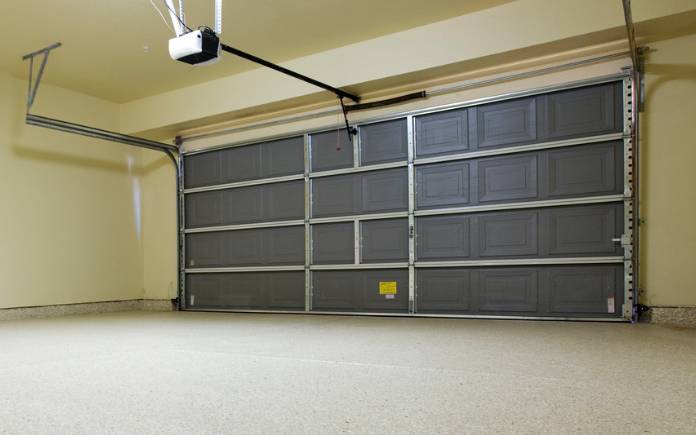Weatherstrip These 3 Spots in Your Home to Save Energy
DANNY LIPFORD

One of the quickest energy- and money-saving tasks you can do is weatherstrip your windows and doors.
Weatherstripping is a piece of rubber, foam, metal or other material used to seal the edges of a door or window to prevent outside air from entering.
Air leaks around window and door edges are a leading cause of high energy costs in your home. By sealing uncontrolled air leaks, you can save 10-20 percent on your heating and cooling bills, according to the U.S. Department of Energy.
Not sure if you need to weatherstrip? Try this test for air tightness: On a windy day, carefully hold a lit incense stick or a smoke pen next to your windows and doors. If the smoke stream travels horizontally, then you need to apply some weatherstripping.
Weatherizing your home is an easy and affordable DIY project. Here are three prime spots for air leaks and how to weatherstrip them.

1. Windows
During cold winter months, windows become a prime spot for energy loss.
Gaps around wooden window frames are more noticeable in the winter because of thermal expansion. Basically, warmer temperatures make wood swell, and cooler temperatures cause wood to contract.
Fortunately, you don’t have to replace your windows to make them more energy-efficient in the winter.
Duck® Brand Weatherstrip Seals are made of self-adhesive foam for an easy install. Just remove dirt and dust from the project area, measure the space, cut the product to size, remove the protective backing and press the seal into place.
For added assurance, especially in colder climates, consider Duck® Brand Heavy-Duty Weatherstrip Seals. They’re guaranteed to not crack in temperatures as low as -40 degrees Fahrenheit.
Best of all, weatherstripping works year-round, not just to prevent drafts, but also to block dust, pollen and insects from invading your home.

2. Doors
Doors are one of the most common sources of leaks and drafts, so it’s important to weatherstrip around their frames just like windows. However, a door’s bottom is a particularly vulnerable spot.
Gaps between a door and floor not only increase drafts but also create a perfect entrance for dirt and pests to penetrate your home.
While inside, look under your entry doors — if the sun shines through, they need bottom seals.
Duck® Brand’s Double Draft Seal is a foam insert you cut to size and secure in place with patented straps. It’s removable, renter-friendly, and works for interior and exterior doors.
The seal won’t slide off or stick to doors, and it won’t damage them. It works with most flooring types, and the fabric cover is machine washable — so you can block drafts in style.
The durable rubber material blocks out drafts, dirt and pests, plus helps reduce noise that enters your home. And because it’s peel-and-stick, it won’t damage your door.

3. Garage Doors
Now that we’ve talked about applying weatherstipping to your windows and doors, let’s talk about a spot in your home that’s often overlooked when weatherizing — the garage door.
Although a garage isn’t technically a living space — unless it doubles as a man cave — it still needs to be sealed off to block out damaging pests and precipitation.
For example, if water enters your garage, it could damage the floor and possibly seep into the rest of your home.
Most garage doors already have a seal, but over time, wind, water, dirt and pests can deteriorate it. If your garage door is working well, then replacing the seal is an easy DIY job.
Duck® Brand’s Garage Door Bottom Seal is designed to create an airtight seal under garage doors that also keeps dirt and insects out during warmer months. Because it’s made with heavy-duty rubber, it won’t freeze or crack, no matter what the season brings.
Weatherstripping around windows and doors is just one of the many methods to make your home more energy-efficient.
Duck® Brand offers a variety of products to weatherstrip your home to help save energy and money.


